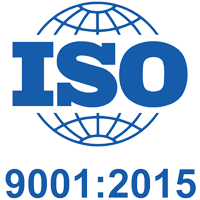Esophagus Cancer Surgery
Surgery is the preferred procedure to treat certain early-stage esophageal cancers. For advanced esophageal cancers, other forms of treatment, such as radiation therapy and chemotherapy, may be used to shrink the tumor before surgery can be reconsidered. If cancer is found in the esophagus, nearby lymph nodes are also removed during surgery to test for the presence of cancer.
Types of surgical procedures which are used to treat esophageal cancer include:
Esophagectomy :
A surgery to remove some or most of the esophagus. Often a small part of the stomach is removed as well. The upper part of the esophagus is then connected to the remaining part of the stomach.
Esophagectomy includes:
Open esophagectomy :
During an open esophagectomy, the surgeon operates through one or more large incisions (cuts) in the neck, chest, or abdomen (belly). Many different approaches can be used to remove part of the esophagus.
For a transthoracic esophagectomy, the esophagus is removed with the main incisions in the abdomen and the chest.
If the main incisions are in the abdomen and neck, it is called a transhiatal esophagectomy.
Some procedures are done through incisions in the neck, chest, and abdomen.
Minimally invasive esophagectomy :
If the affected area is small, a minimally invasive esophagectomy may be performed instead of an open esophagectomy. For some early (small) cancers, the esophagus can be removed through several small incisions instead of large incisions. The surgeon puts a scope (like a tiny telescope) through one of the incisions to see everything during the operation. Then the surgical instruments go in through other small incisions. Because it uses smaller incisions, minimally invasive esophagectomy may allow the patient to leave the hospital sooner and recover faster.
Endoscopic mucosal resection :
Endoscopic mucosal resection (EMR), a minimally invasive procedure, is performed to remove very early-stage cancer in the esophagus. In some cases, it may be used during the diagnosis process. During an EMR, a thin tube (endoscope) is inserted down the throat. The endoscope has instruments attached to the end that are designed to remove the tumor.
Lymph node removal :
For either type of esophagectomy, nearby lymph nodes are also removed during the operation as well. These are then checked in the lab to see if they contain cancer cells.
Stenting :
If a tumor is blocking the esophagus, a doctor can implant a metal or plastic device called a stent into the esophagus to keep it open.
Quick links
- Emergency Services
- International Patient Services
- Corporate Tie-Up
- TPA & Cashless Facilities
- Find a Doctor




















